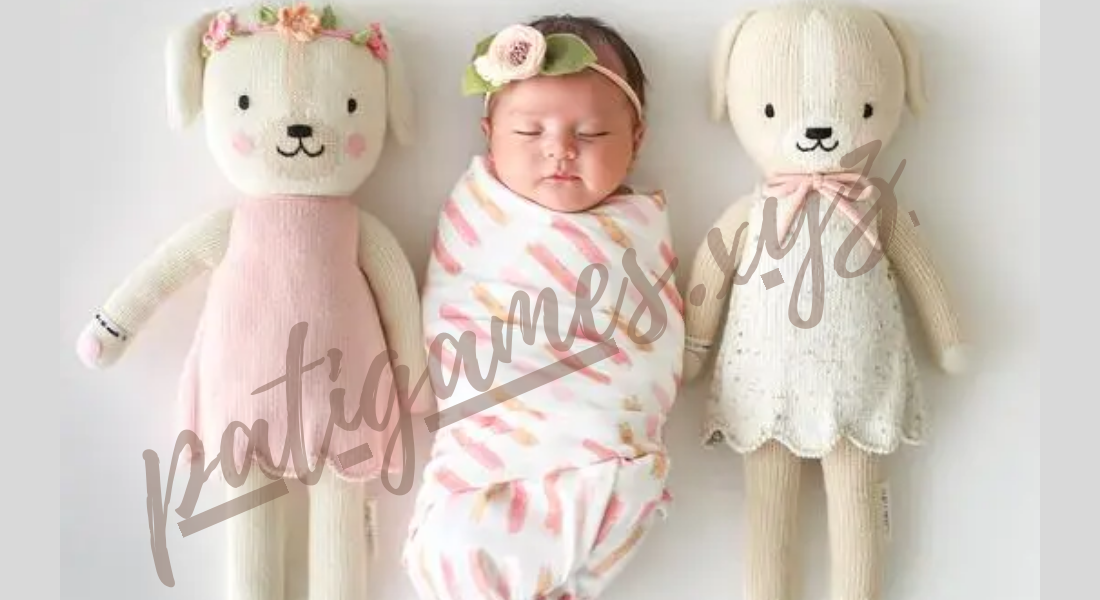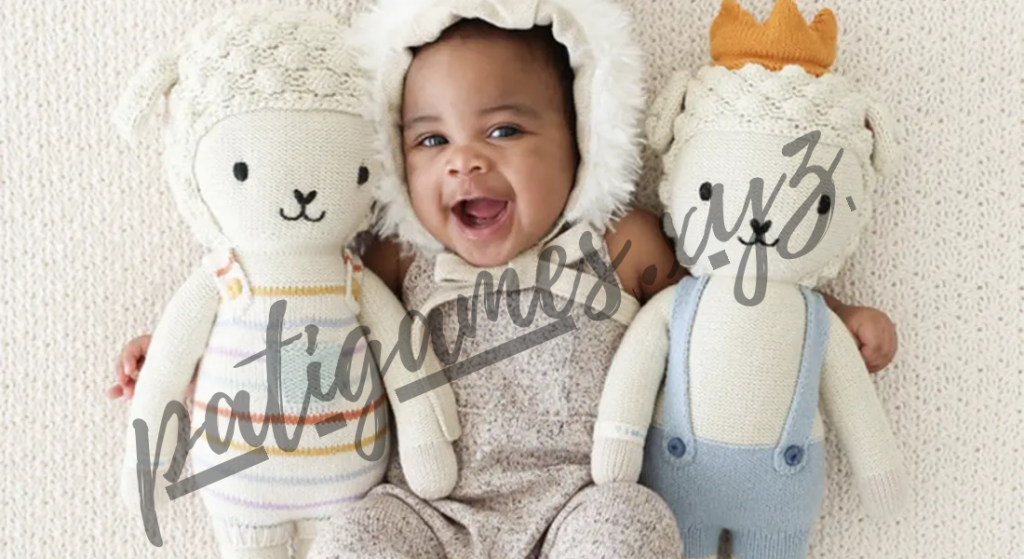Blog
Stuffed Animals for Toddlers The Perfect Companions for Comfort and Play
Stuffed animals for toddlers are more than just toys—they’re companions, comfort objects, and sources of endless entertainment. These soft, huggable friends provide security, spark imaginative play, and help toddlers develop important social and emotional skills. From classic teddy bears to unique animal plushies, stuffed animals make great additions to any toddler’s world. If you’re considering the best options, here’s everything you need to know about choosing high-quality, safe, and engaging stuffed animals for toddlers.
Why Stuffed Animals Are Essential for Toddlers
Stuffed animals play a significant role in a toddler’s early years, impacting their emotional and social development. Here’s why these plush companions are essential:
- Emotional Comfort: Stuffed animals offer toddlers a sense of security, helping them manage emotions like fear, anxiety, or sadness. Many children rely on their favorite plush friend for comfort during stressful moments or bedtime.
- Imaginative Play: With stuffed animals, toddlers can invent stories, create adventures, and engage in pretend play, which is key to cognitive development. Imaginative play fosters creativity and helps kids learn to express themselves.
- Learning Social Skills: Through interactions with stuffed animals, toddlers often practice nurturing behaviors like feeding, caring, or talking to their plush friends, helping them build empathy and develop social skills.
- Developing Independence: Stuffed animals encourage toddlers to explore their independence. They can carry their plush friends around and care for them, boosting their confidence and helping them feel in control.
Key Features to Look for in Stuffed Animals for Toddlers
When choosing stuffed animals for toddlers, it’s essential to prioritize safety, comfort, and design. Here are the top features to look for:
1. Soft, Hypoallergenic Materials
Toddlers love cuddling their stuffed animals, so choosing ones made from soft, hypoallergenic materials is crucial. Look for plush toys made from organic cotton or other skin-safe fabrics to prevent irritation, especially for toddlers with sensitive skin. High-quality materials also make the stuffed animals more durable.
2. Appropriate Size
Size matters when selecting stuffed animals for toddlers. Opt for a size that’s easy for your child to hold and carry around. A plush friend that’s too big can be challenging for toddlers to manage, while smaller ones are more portable and easy to handle during playtime or travel.
3. Safety Features
Safety is paramount with toddler toys. Choose stuffed animals with secure stitching and no small parts, such as plastic eyes or buttons that could be a choking hazard. Embroidered eyes and noses are a great alternative, ensuring a safe and sturdy design that stands up to rough handling.
4. Machine Washable
Toddlers bring their stuffed animals everywhere, so choose ones that are machine washable for easy cleaning. Machine-washable toys save parents time and effort and keep the plush friend fresh and free from germs.
5. Engaging and Unique Designs
Look for stuffed animals with designs that capture your toddler’s interest. Fun shapes, vibrant colors, and unique animal choices can enhance your child’s curiosity and encourage imaginative play. Some stuffed animals even come with added textures or sensory features, like crinkly ears or squeakers, for extra engagement.

Popular Types of Stuffed Animals for Toddlers
From classic plush bears to more unique choices, there’s a wide variety of stuffed animals that cater to toddlers’ interests. Here are some popular types that make excellent options:
1. Classic Teddy Bears
The teddy bear is a timeless favorite among toddlers. Soft, comforting, and easy to cuddle, teddy bears come in various sizes, colors, and styles, making them perfect for children who love a traditional plush friend. Many teddy bears are also customizable, allowing you to add a personal touch, such as a child’s name or a unique accessory.
- Best For: Comfort and companionship, classic appeal, easy for toddlers to bond with.
2. Animal-Themed Plush Toys
From lions and elephants to unicorns and dinosaurs, animal-themed plush toys allow toddlers to explore the animal kingdom through play. These stuffed animals are often designed to resemble real animals or fantasy creatures, helping children learn about nature, animals, and colors in an engaging way.
- Best For: Toddlers who are curious about animals and nature, fun and educational play.
3. Sensory and Interactive Plush Toys
Sensory plush toys are ideal for toddlers who enjoy a bit more interaction with their toys. These stuffed animals often have different textures, crinkly parts, or gentle sounds like rattles and squeakers, stimulating the senses. Sensory stuffed animals encourage exploration, making them great for sensory development.
- Best For: Toddlers who enjoy hands-on play and benefit from sensory stimulation.
4. Storybook Character Plushies
Stuffed animals inspired by popular storybook characters, like those from “The Very Hungry Caterpillar” or “Where the Wild Things Are,” bring beloved tales to life. These plush friends add a special touch to bedtime stories and can help toddlers connect with their favorite books on a deeper level.
- Best For: Storytime companions, encouraging a love of books, fostering a connection to favorite stories.
5. Stuffed Dolls
Soft stuffed dolls provide a unique option for toddlers who enjoy pretend play and role-playing. Stuffed dolls often have additional clothing or accessories, allowing kids to practice dressing and caring for their dolls, which helps develop fine motor skills and nurturing behaviors.
- Best For: Pretend play, teaching nurturing skills, and encouraging fine motor development.
Benefits of Stuffed Animals for Toddlers
Stuffed animals for toddlers provide much more than just playtime fun. Here’s how these toys contribute to your child’s development:
- Emotional Support: Stuffed animals give toddlers a sense of comfort and security. Whether at bedtime or during new experiences, a trusted plush friend offers a feeling of familiarity and emotional stability.
- Social Development: When toddlers play with stuffed animals, they often engage in role-play scenarios, which helps them understand social roles, practice empathy, and learn how to express emotions.
- Language Skills: Many toddlers talk to their stuffed animals, which helps develop their language skills and expand their vocabulary. Through conversations with their plush friends, toddlers learn to articulate feelings, ask questions, and narrate their day.
- Fine Motor Skills: Activities like dressing stuffed animals, holding and carrying them, or using zippers and buttons help toddlers develop fine motor skills, which are crucial for later tasks like writing and drawing.
Tips for Choosing the Right Stuffed Animals for Toddlers
Selecting the perfect stuffed animal for your toddler can be fun and easy with a few simple tips:
- Consider Your Toddler’s Interests: Pay attention to your toddler’s interests. If they love dinosaurs or unicorns, choosing a stuffed animal in that theme will make the toy more meaningful to them.
- Look for Quality and Durability: Toddlers can be rough with their toys, so look for stuffed animals with strong stitching and high-quality materials that can withstand active play and repeated washing.
- Prioritize Safety: Always choose stuffed animals with embroidered features instead of plastic pieces to avoid choking hazards, and check for a secure, well-stitched design.
- Choose Age-Appropriate Designs: Look for simple designs with bright colors and soft textures that appeal to toddlers’ senses and encourage them to explore and interact with the toy.
Caring for Stuffed Animals
Stuffed animals can quickly become a child’s constant companion, so keeping them clean and well-maintained is essential. Here’s how to care for them:
- Wash Regularly: Machine-washable stuffed animals should be washed every couple of weeks to remove germs, dust, and allergens. Always follow the care instructions on the label.
- Spot Clean When Needed: For quick clean-ups, spot-clean with a damp cloth and mild soap, especially on areas that are frequently touched.
- Check for Loose Parts: Periodically check for any loose stitching or parts, as well-loved stuffed animals may need occasional repairs to stay safe and intact.
- Rotate for Freshness: If your toddler has several stuffed animals, consider rotating them so each one stays fresh and the bond with each friend remains strong.
Final Thoughts on Choosing Stuffed Animals for Toddlers
Stuffed animals for toddlers are more than just toys—they’re lifelong friends, sources of comfort, and catalysts for learning. From classic teddy bears to sensory toys and storybook characters, each type of stuffed animal has something unique to offer, making them a wonderful addition to any toddler’s world.
Choosing the right stuffed animal for your toddler ensures that they have a cozy companion that supports emotional growth, inspires creativity, and promotes essential skills. With careful selection and a bit of care, these plush friends will bring endless joy, comfort, and learning opportunities into your child’s early years.

